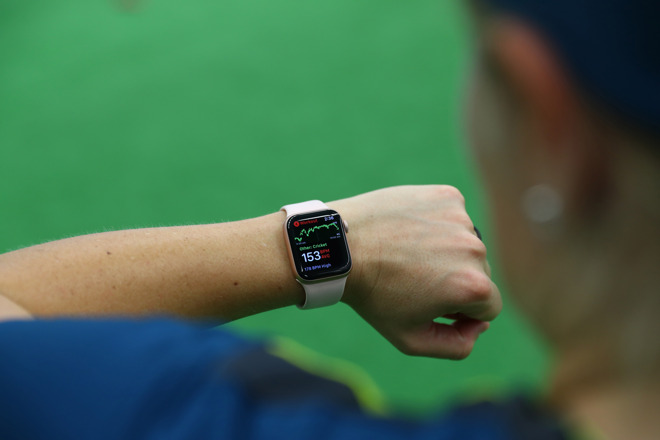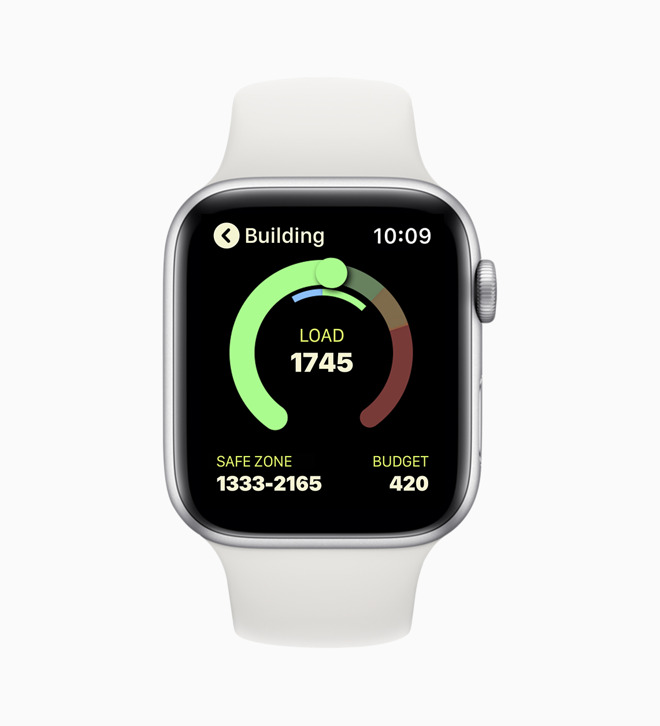Australia's Women's Cricket Team uses Apple Watch to train
Hoping to sell people on the Apple Watch's fitness uses, Apple on Monday highlighted the Australian Women's Cricket Team, which is using the wearable to its players.

Using an unnamed app, the team tracks and shares each player's activity, including statistics such as mood, sleep, heart rate and training load, Apple said. Coaches receive the data and can adjust training accordingly, analyzing it on an iPad.
The app was developed by the Australian Institute of Sport and is intended for teams beyond cricket as well.

Most anecdotal Apple Watch marketing has focused on the device's fall- and heart-related health features. Stories regularly appear of Watch alerts detecting heart arrhythmias, a potentially fatal condition.
The Watch (and other wearables) have quickly caught on with insurers and other businesses with a stake in health, since they offer more accurate activity tracking, including heart rate monitoring. Fitter people are often less of a financial burden, since while even the cheapest Apple Watch Series 4 starts at $399, that pales next to the tens or hundreds of thousands of dollars it can cost in the U.S. for surgery or treatment of chronic conditions.

Using an unnamed app, the team tracks and shares each player's activity, including statistics such as mood, sleep, heart rate and training load, Apple said. Coaches receive the data and can adjust training accordingly, analyzing it on an iPad.
The app was developed by the Australian Institute of Sport and is intended for teams beyond cricket as well.

Most anecdotal Apple Watch marketing has focused on the device's fall- and heart-related health features. Stories regularly appear of Watch alerts detecting heart arrhythmias, a potentially fatal condition.
The Watch (and other wearables) have quickly caught on with insurers and other businesses with a stake in health, since they offer more accurate activity tracking, including heart rate monitoring. Fitter people are often less of a financial burden, since while even the cheapest Apple Watch Series 4 starts at $399, that pales next to the tens or hundreds of thousands of dollars it can cost in the U.S. for surgery or treatment of chronic conditions.

Comments
looking at the dial readout, seems similar to watch Garmin offer from a running perspective.
In the second paragraph of this article, perhaps?
2) All the data is funneled directly into Apple's Health App. While that is a great data repository, it is also a black hole that sucks in data but fails to report back information.
Instead, at great reluctance, I stopped using Apple's app and now use iCardio exclusively. It not only gives me the same on-watch stats that Apple's app does while I'm exercising but it has really good post-workout analytics to help me understand what happened during a workout, where things are trending and where my fitness level lies.
And, another 3rd party app that this Australian app may be similar to is Training Peaks which allows coaches to see and analyze your workouts, present training plans, compare adherence to those plans and make modification as necessary
* Yeh, I know Apple's app has a HIIT function. Unfortunately it doesn't seem to do much. For example: during a HIIT session the athlete is performing intervals of hard and slow (which may be based on time, distance, heart rate, etc.) and needs a prompt tell them when to go hard and when to go slow -- and then follow-up analytics to show how they performed. Apple's app does none of that.
I think Apple is relying more on medical personnel to design and drive their exercise apps rather than serious athletes. Fortunately we have 3rd party apps to fill in the holes.